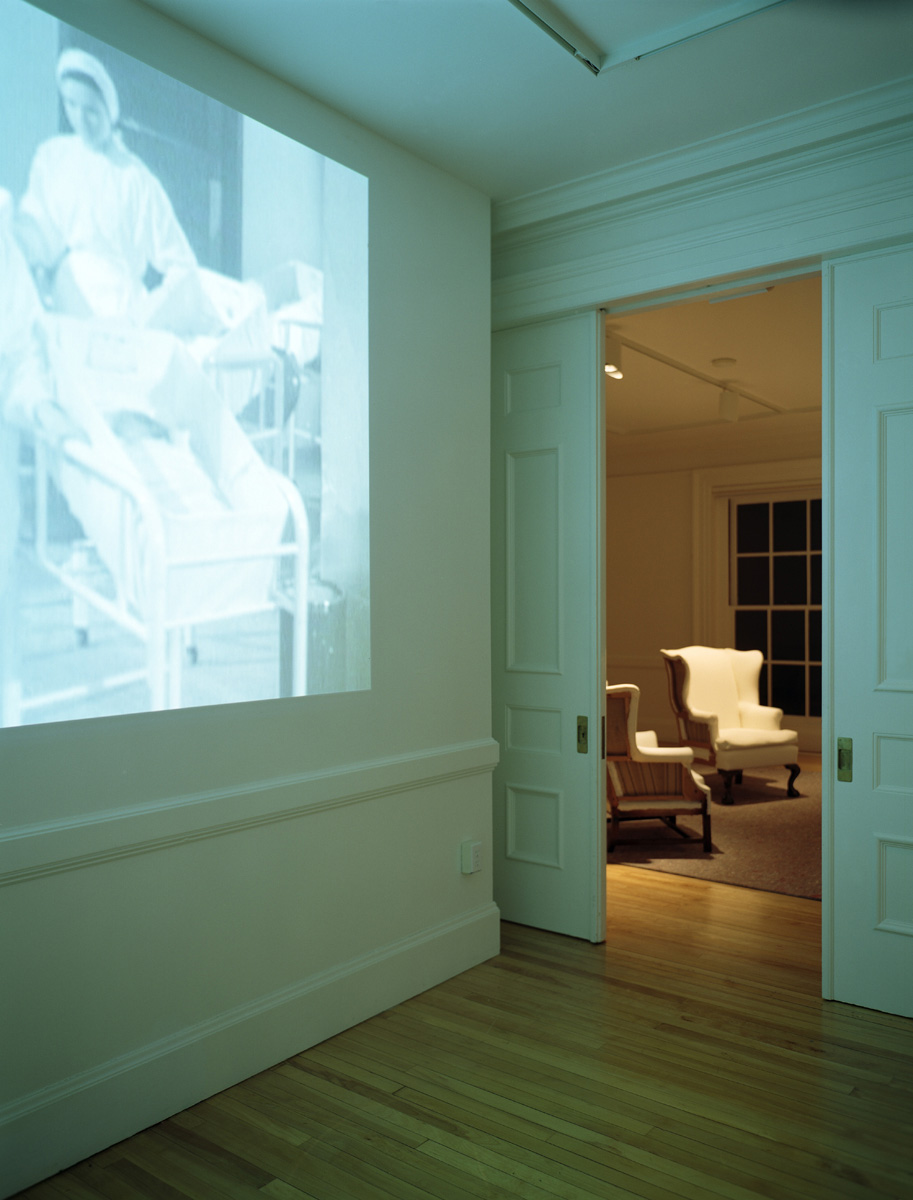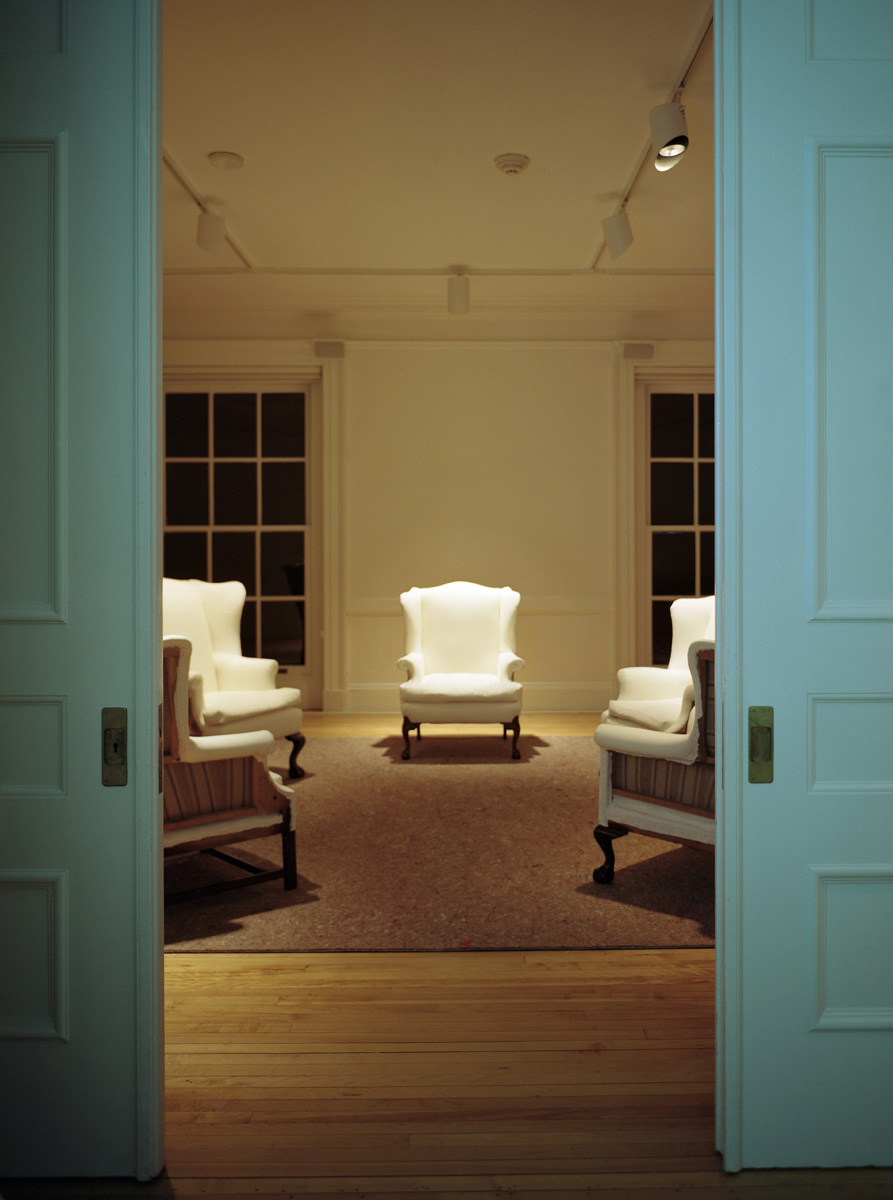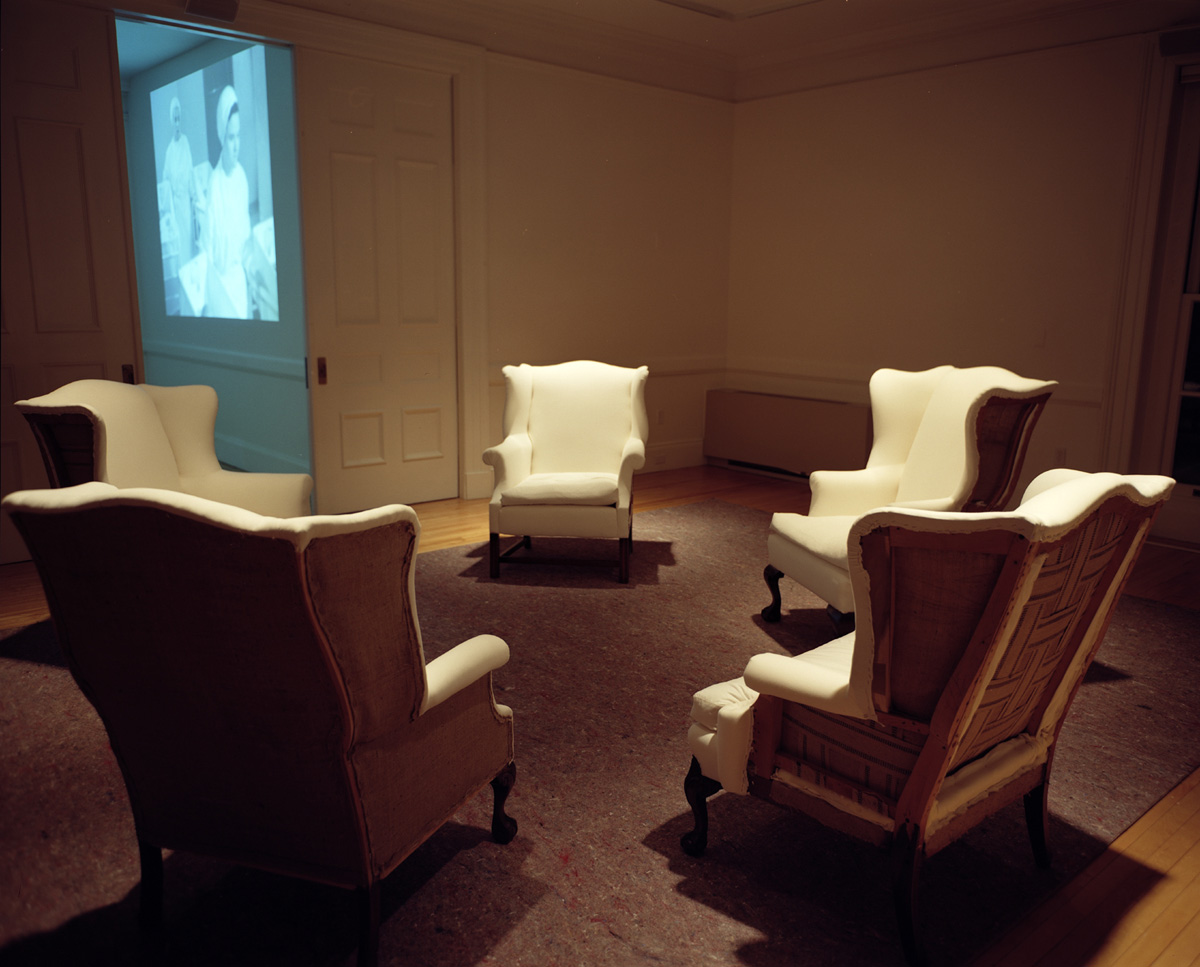Description
Viewers are drawn into the first room of Everlasting: New England by a large video projection, depicting a never-ending stream of nurses wheeling babies through a hospital doorway. Once inside, voices in the second room can be heard and audience members are invited to enter a room where the furniture has been stripped bare of its covering and the rug removed from the floor, with only the pad left behind. There they can sit in the chairs and listen to the 5-track audio piece composed by Fessler.
The 17-minute, surround-sound audio composition, created from the oral histories of more than fifty women living in New England who lost children to adoption during the 1950s and 60s, modulates between the voices of individual women and a cacophony of voices. Collectively, they tell the story of women who were denied motherhood and were asked to take their secret to their grave. Many of the women Fessler interviewed were speaking publicly about their experiences for the first time.
Information
Everlasting: New England, installation by Ann Fessler, 2004
Medium: Site-specific surround-sound audio piece composed from oral history interviews with 54 women from New England; 5 altered wing chairs; rug pad; video projection.
Everlasting: New England was the second site-specific audio and video installation by Fessler that gave voice to women who lost newborns to adoption between 1945 and 1973, when an unprecedented 1.5 million women surrendered babies due to the social pressures of the time. The exhibition was developed during Fessler’s year-long Radcliffe Fellowship at the Radcliffe Institute for Advanced Study at Harvard. She spent the year interviewing, researching, and composing the audio piece, which premiered in the spring of 2004.
Fessler acquired old wing chairs and worked with an upholsterer who could adapt them to her design. She wanted the chairs to be inviting and comfortable, but also appear vulnerable and exposed. They were constructed so viewers could see under the skin, to the bones of the chairs.
The installation was made possible by the Radcliffe Institute for Advanced Study; the Rhode Island State Council for the Humanities; the Rhode Island School of Design; Lois Lunin; and the Pembroke Center for Teaching and Research on Women, Brown University, Providence, Rhode Island.
While at Radcliffe, Fessler also began writing The Girls Who Went Away, published by The Penguin Press in 2006, and researched archival footage for her film A Girl Like Her, which she had begun in 2002.
Historical Background
The time period explored in the two site-specific Everlasting installations is remarkable in both American history and women’s history. After World War II, a record number of young women were going to college, working outside of the home, and becoming more independent and self-sufficient. It was becoming increasingly less likely that a woman would move from the home of her parents to the home of her husband.
For men and women of the baby boom generation, sexual relations among those who had no plans to marry was quickly becoming more common. Yet sex education was little more than a scratchy movie about egg and sperm meeting in a mysterious place that had little to do with pregnancy prevention or sexual desire. Access to effective birth control for unmarried women was non-existent in many states until Planned Parenthood clinics began to open in the late 1960s. Doctors often refused to prescribe birth control to unmarried women, and in some states it was illegal for a single man or woman to access birth control. Though the Federal Drug Administration approved the birth control pill in 1960, the Supreme Court did not guarantee an unmarried person’s right to contraceptives throughout the US until the 1972 decision Eisenstadt v. Baird.
During this time period, millions of women became pregnant. In the 1950s and 60s, a middle-class unwed girl or woman who became pregnant either quickly married, or was forced to drop out of school or quit her job and go into hiding. Some went out of town to stay with relatives, others hid away in apartments, but many were sent to one of the more than two-hundred maternity homes located around the country. The demand for places at these homes was so great that by the 1960s, 35% of the applicants were turned away. If a woman went into hiding in one of these homes, she usually did not come out with her child. Between 1945 and 1973, 1.5 million women surrendered their babies for non-family adoptions.
Some of the women felt unprepared to parent or cope with the social scorn that they would surely face as a never married mother. However, many wanted to mother and were pressured into surrendering. Most were repeatedly told that if they loved their child they must give it up. The women of this era were rarely presented with any option other than adoption. Most were unaware of government programs that may have offered financial help. Moreover, they were not informed by those who counseled them. Many did not read or fully understand what they were signing when they terminated parental rights. None had legal representation. A few returned to the agency within days to retrieve their child, and though they were within the legal revocation period, they were told that it was too late to change their mind. Everyone they trusted assured them that they would move on and forget. When they continued to grieve the loss of their child, they thought something was wrong with them. In most families, it was never spoken of again.
Shame is a very effective silencer. Some women later revealed their secret to men they were about to marry. Some did not. A few became active in adoption reform movements around the country. Because most of the women of this generation were silenced by shame, their stories were relatively unknown. The women themselves remained unaware that millions of other women had experienced the loss of a child under similar circumstances.
Everlasting offered these mothers an opportunity to participate in a more inclusive account of single pregnancy and adoption in post-World-War-II America, a history that had previously excluded them.
—Ann Fessler, 2004







